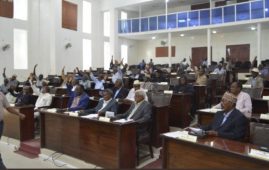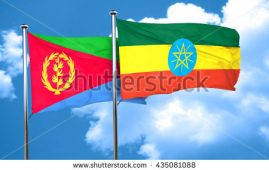In western Ethiopia, about 576 km from Addis Ababa, lay a mega sugar project expected to double Ethiopia’s current sugar production.
Water extracted from Beles River, a tributary of the Blue Nile, will supply to the 75,000 ha sugar plantations, extended from Awi Zone and South Gojjam Zones of Amahara Regional State to parts of Benishangul Gumuz Regional State. It takes a 56 kms drive – just to finish one side of the plantation field.
Beles sugar project comprises three sugar factories – each with annual production capacity of 242,000 tons of sugar and 20,827 m3 Ethanol, when completed.
The entire plantation gets water supply from Beles River channeled via an 8 meters high and 21 meters wide diversion weir built over the river. The construction of the diversion weir and irrigation canals is completed. Sugarcane planting, with water being delivered through sprinklers, pumps and tunnels, is underway.
The project staffs are camped in Awi Zone, Jawi Woreda “Meles Village”, named after the late Prime Minister, where I spent two nights. Upon inquiry I learned they started living in the village the day after the passing of Meles Zenawi. They found it fitting to name the site of a mega project after the leader that set Ethiopia on a developmental path.
About 1525 households have been displaced to make way for the plantation field and were paid a compensation of 72 million birr, according to the chiefs of the project. The farmers confirmed to me they received a saving account where they withdraw at will. I observed a resettlement village with school and health facilities and a newly constructed ten kilometers road that connects the village to the main road. However, some of the resettled were not yet provided a farm land.
The re-settled farmers were provided lands in three areas that were said to be either uninhabited or taken from investors. Of which, in two areas the farmers received their plot.
It was in the third area that a group faced problems. The group of farmers who went to the third area, which was said to be uninhabited, faced hostile reaction. The semi-pastoral locals chased the farmers and escorting officials with arrows and characterized the situation as an indication that the government did not recognize of their existence.
My inquiry led me to conclude the mistake arose from the lack of coordination between officials of the two regions. This is one of those issues that require extra-caution in execution. Even though it was a minor conflict and there was no causality, it leaves a bad taste in future relationship of the communities and stained the otherwise satisfactory resettlement process.
Two of the three factories of Beles sugar project are scheduled to start production in about six months. The fact that it is being built by local contractors is its notable feature. 
With three other sugar mega projects, named Kessem, Tendaho and Kuraz I, that are to be completed in 2007, the corporation can claim success in attaining “70 percent of the high case scenario” set under the Growth and Transformation Plan, according to Shiferaw Jarso, Director General of Ethiopia’s Sugar Corporation.
The GTP target for the sugar sector is set at building 10 new sugar factories and a 2.25 million tons of sugar production putting the nation in a club with Brazil and India.





